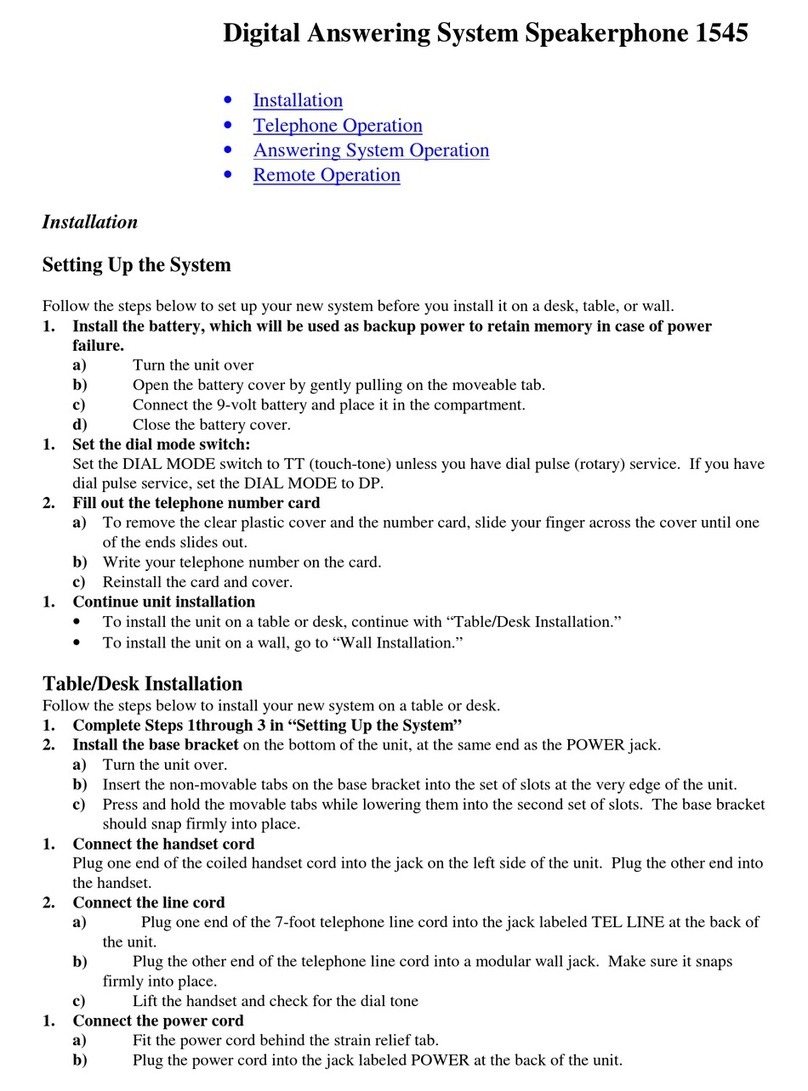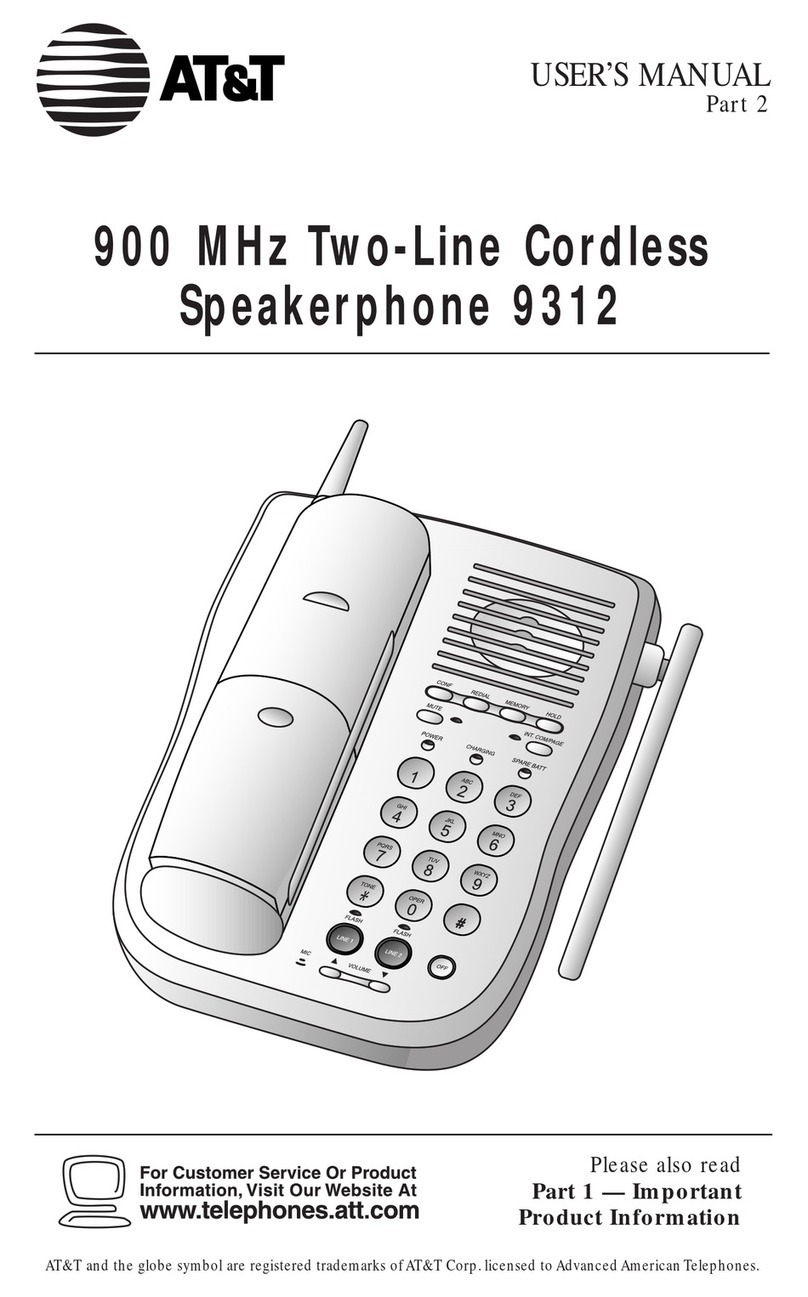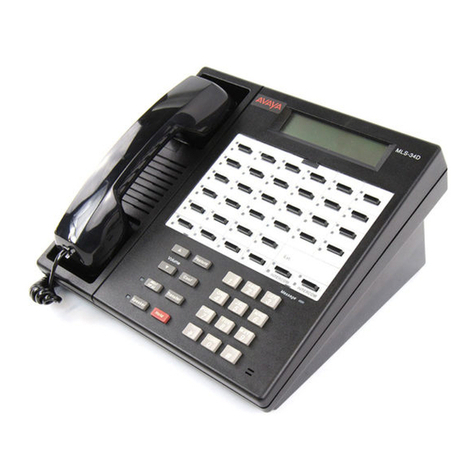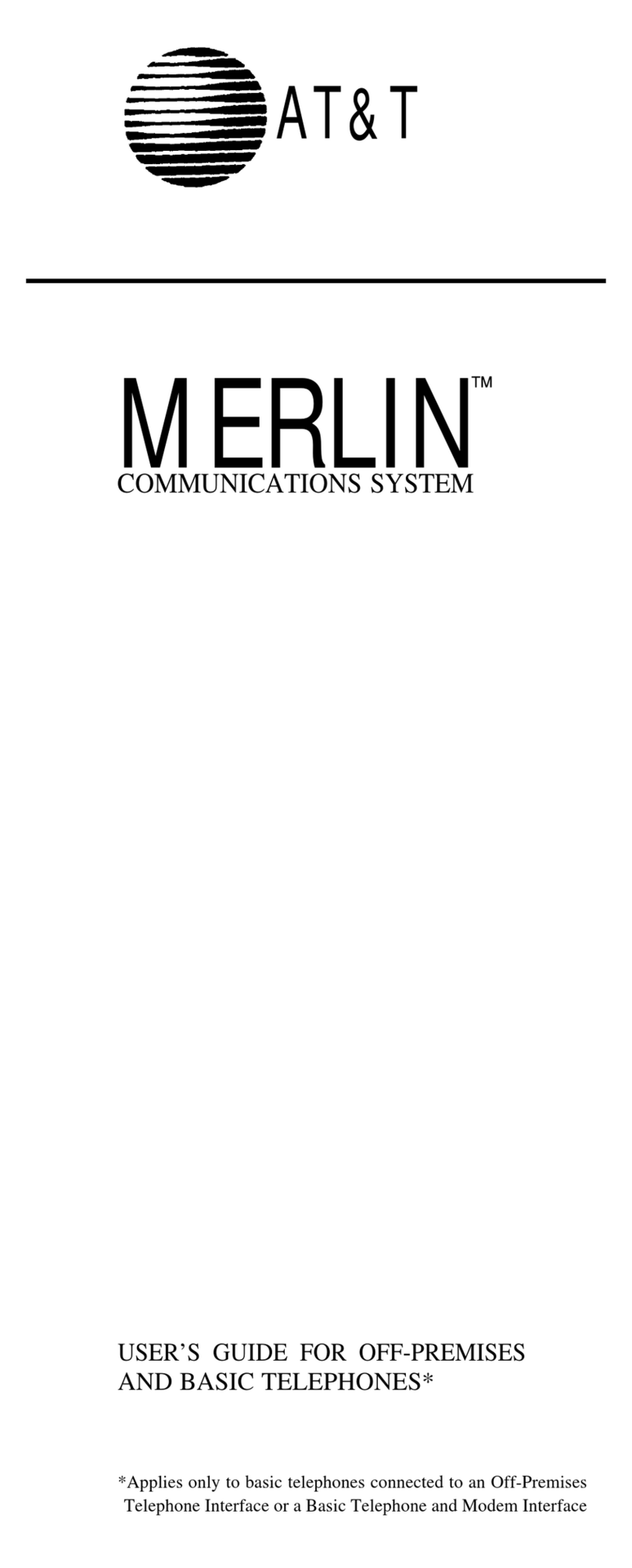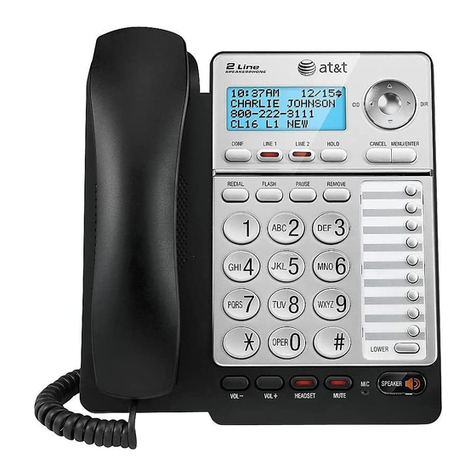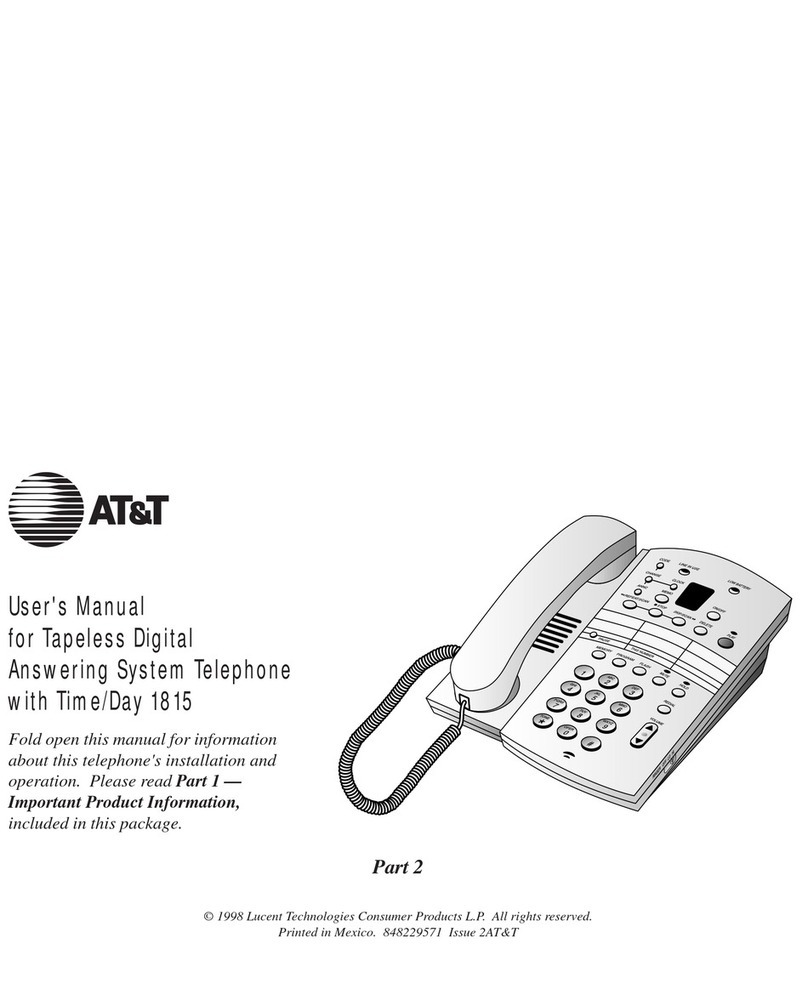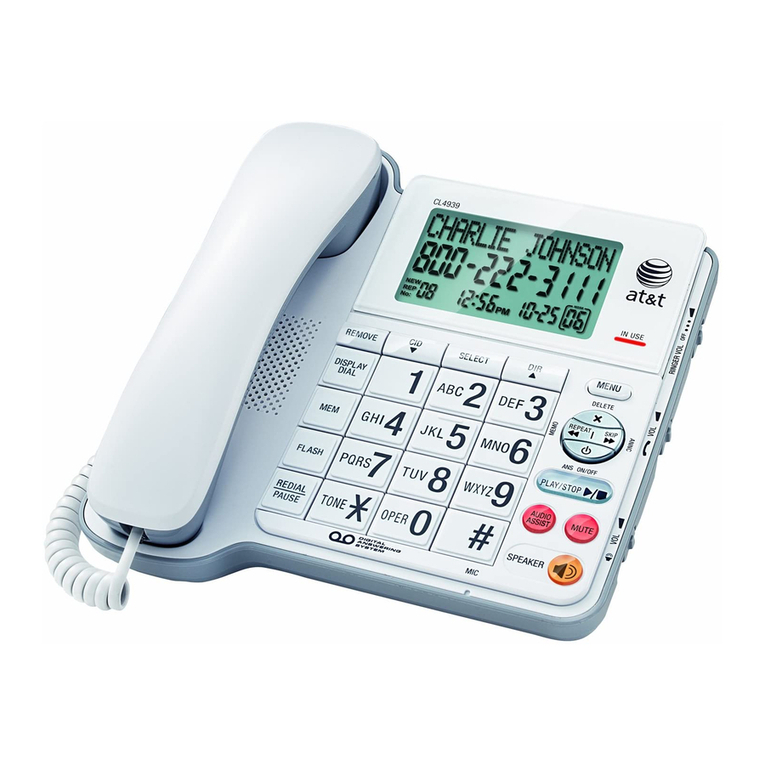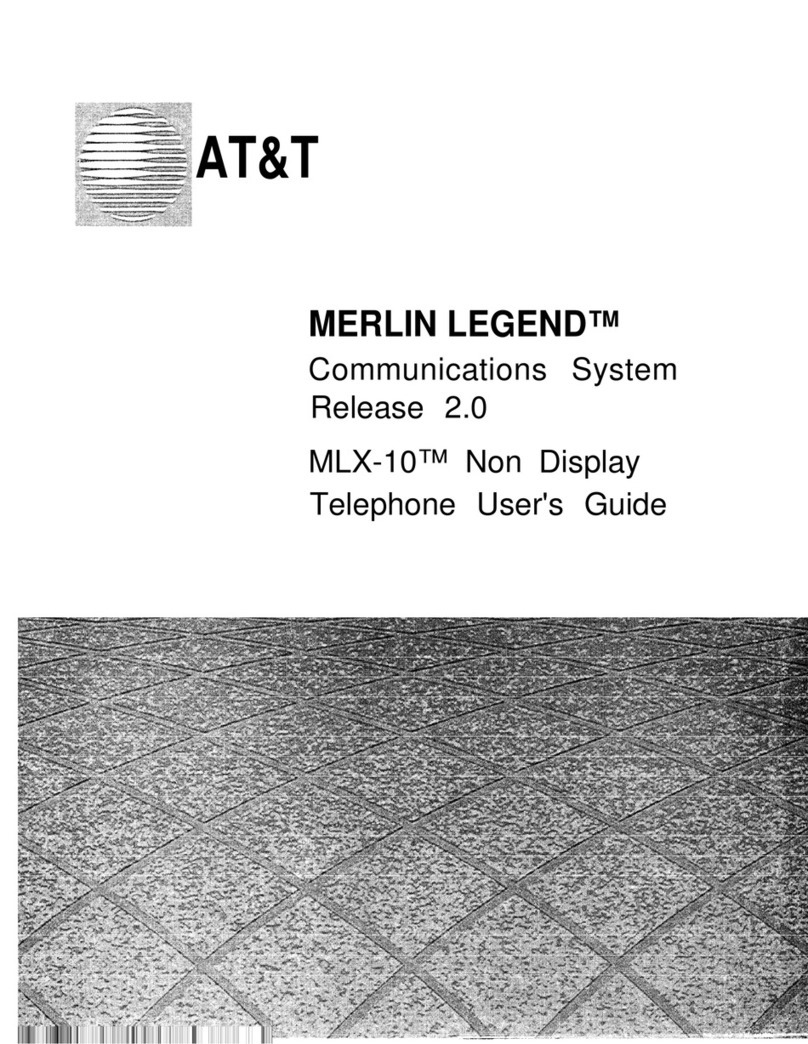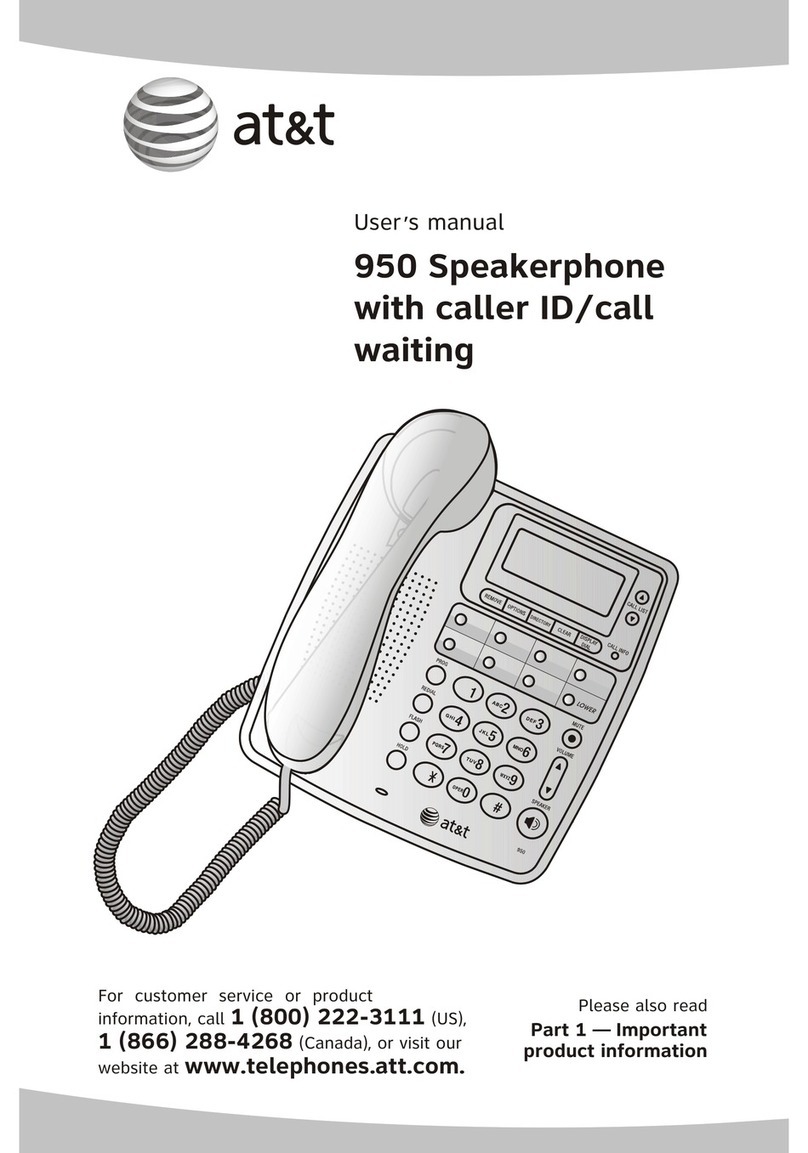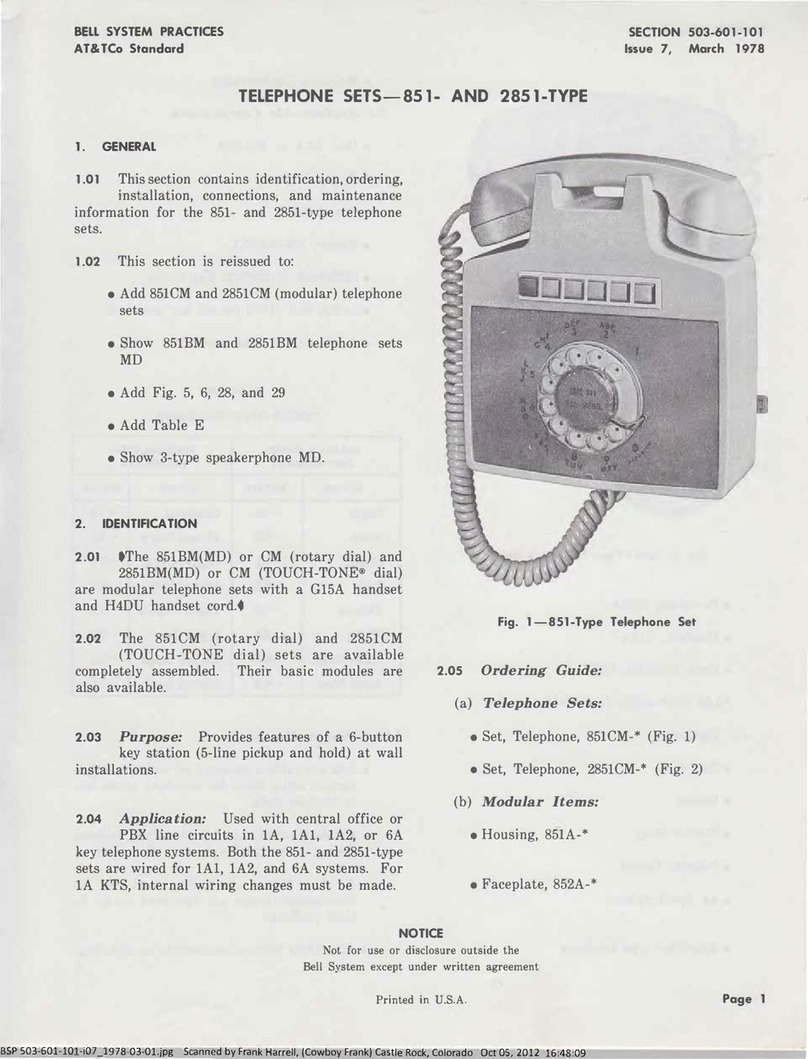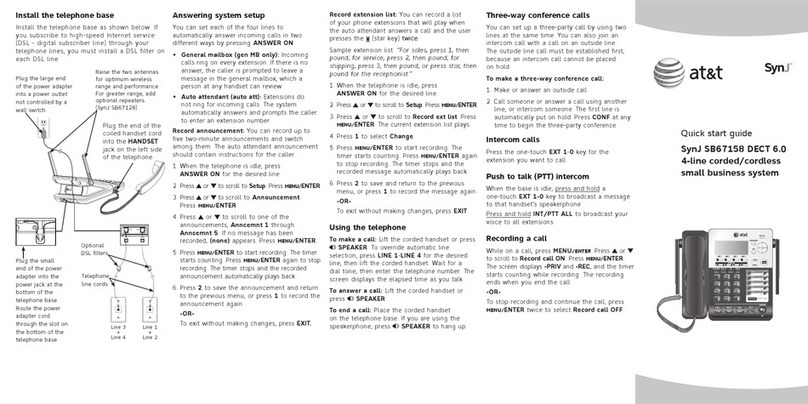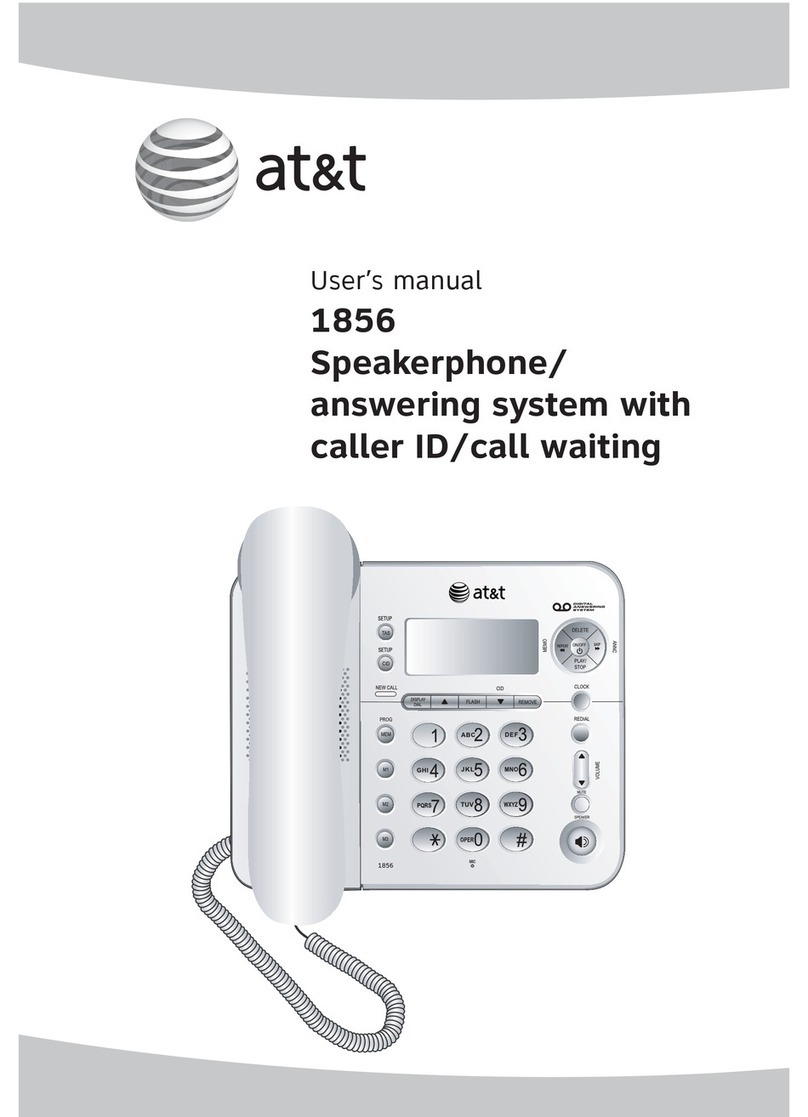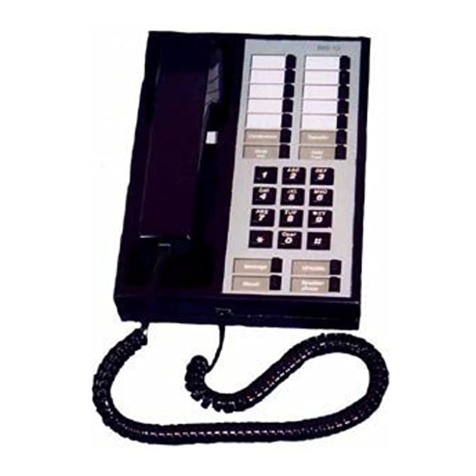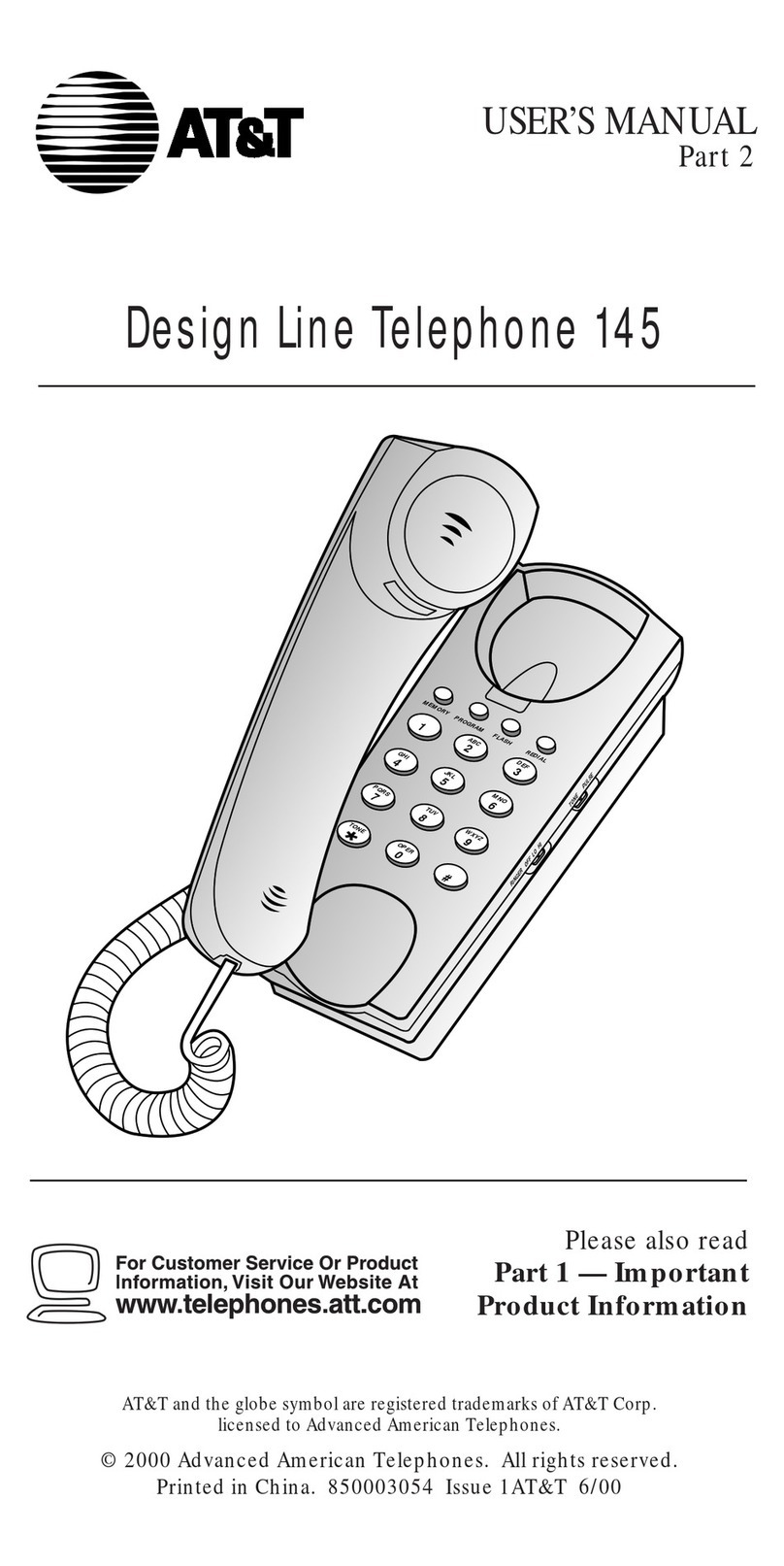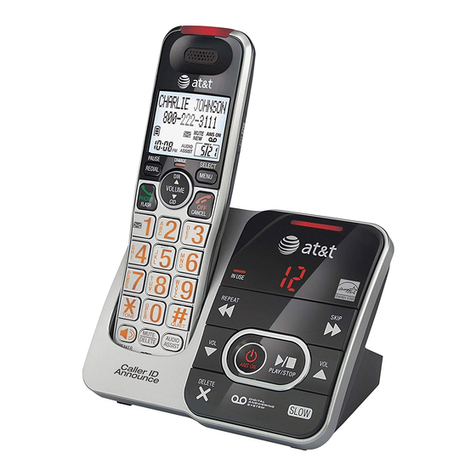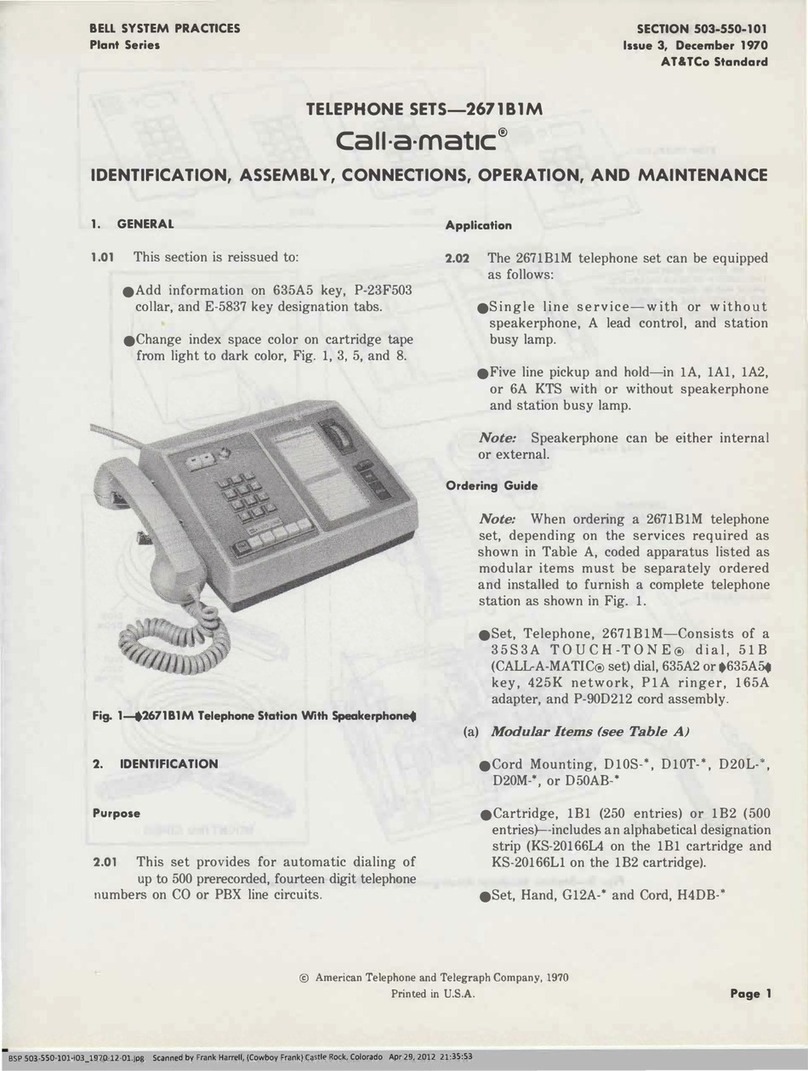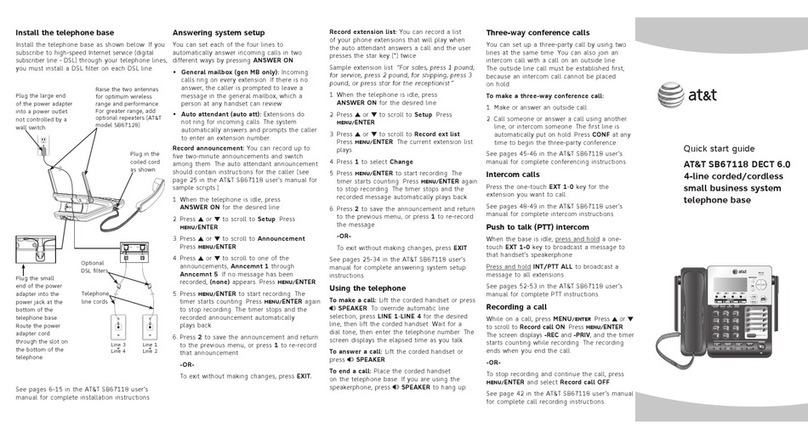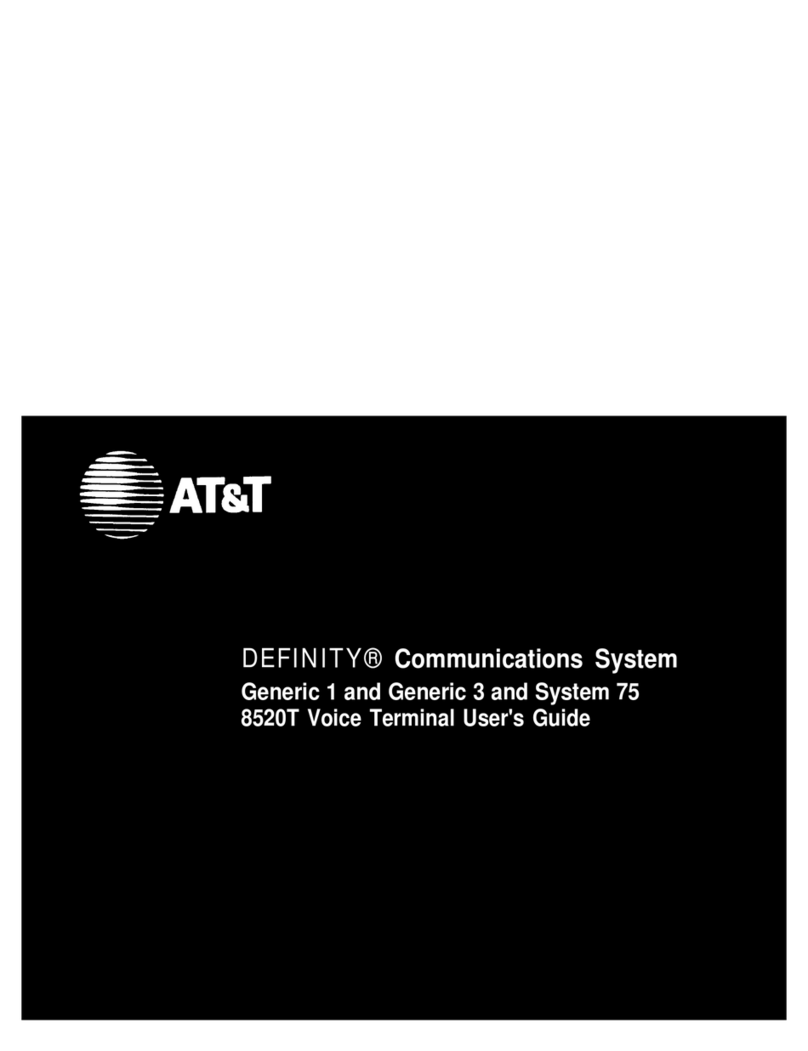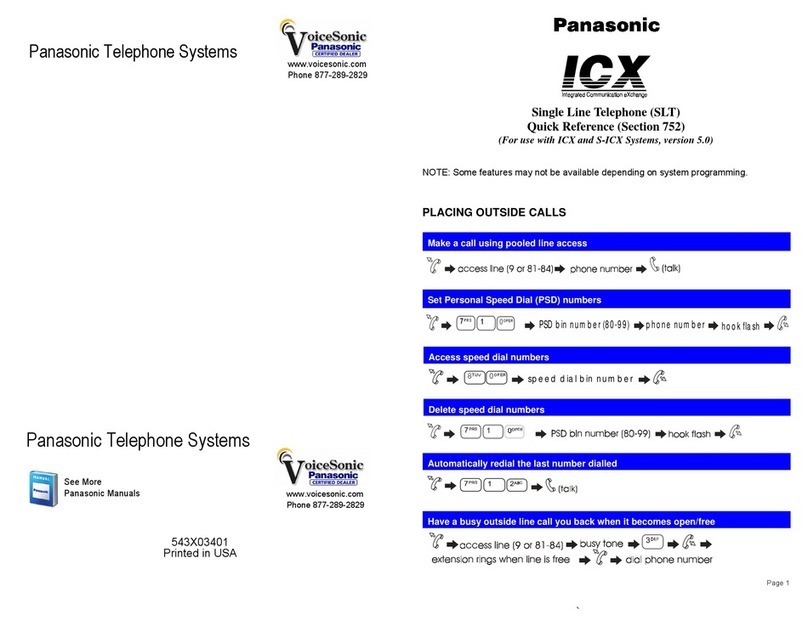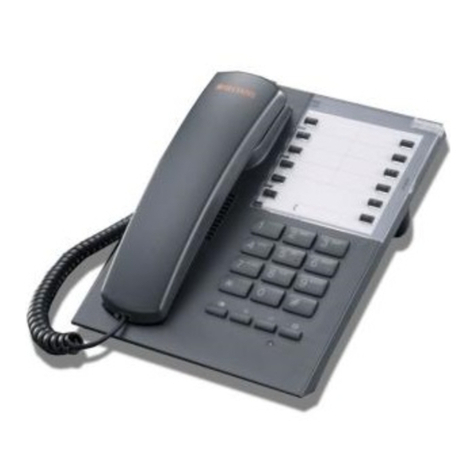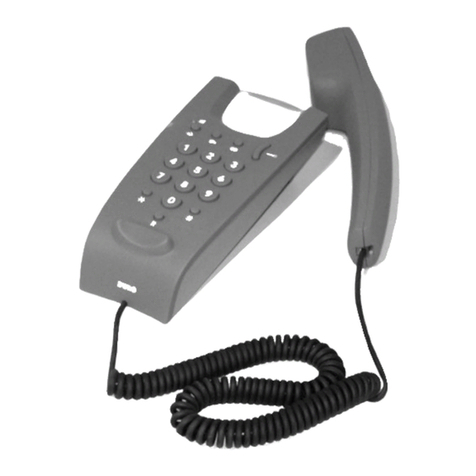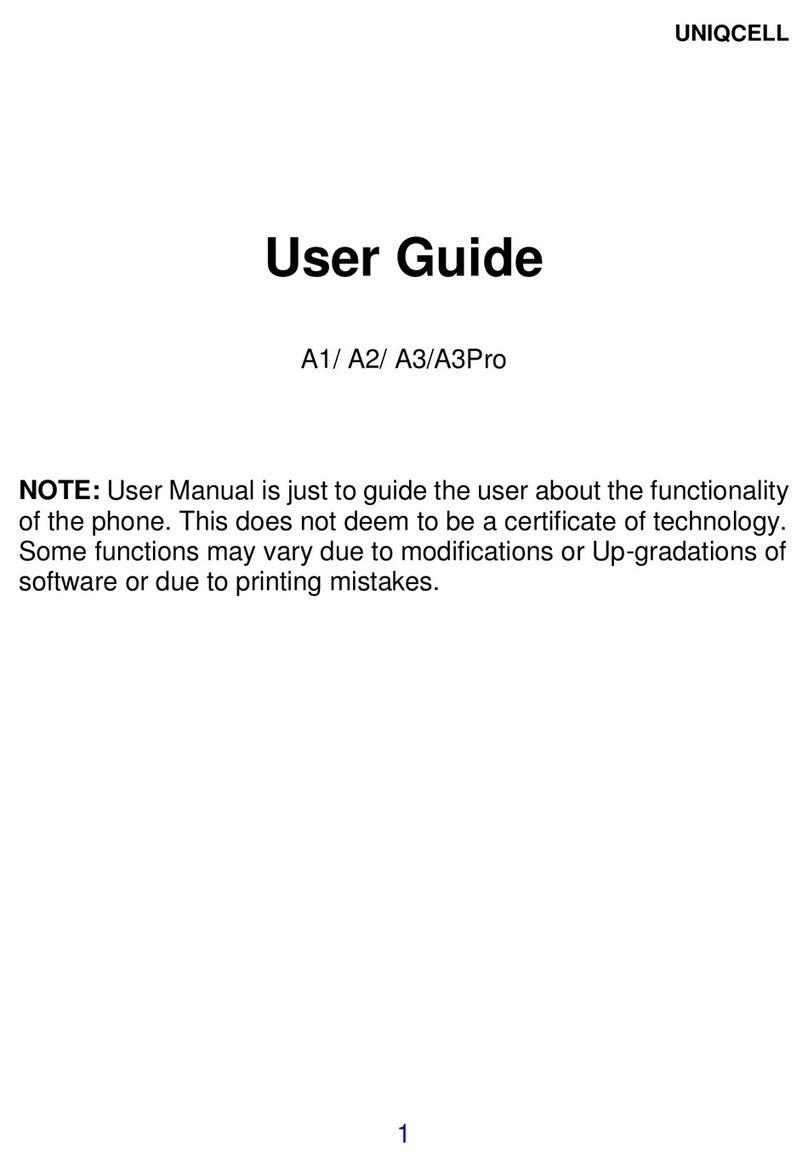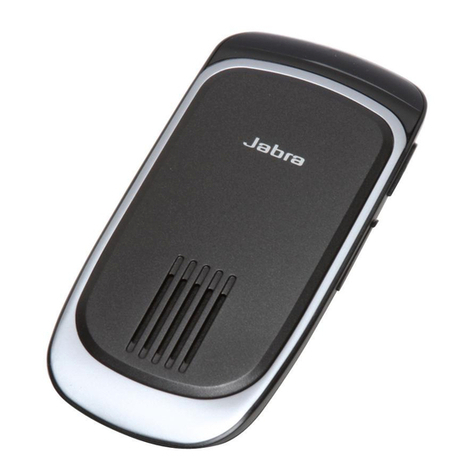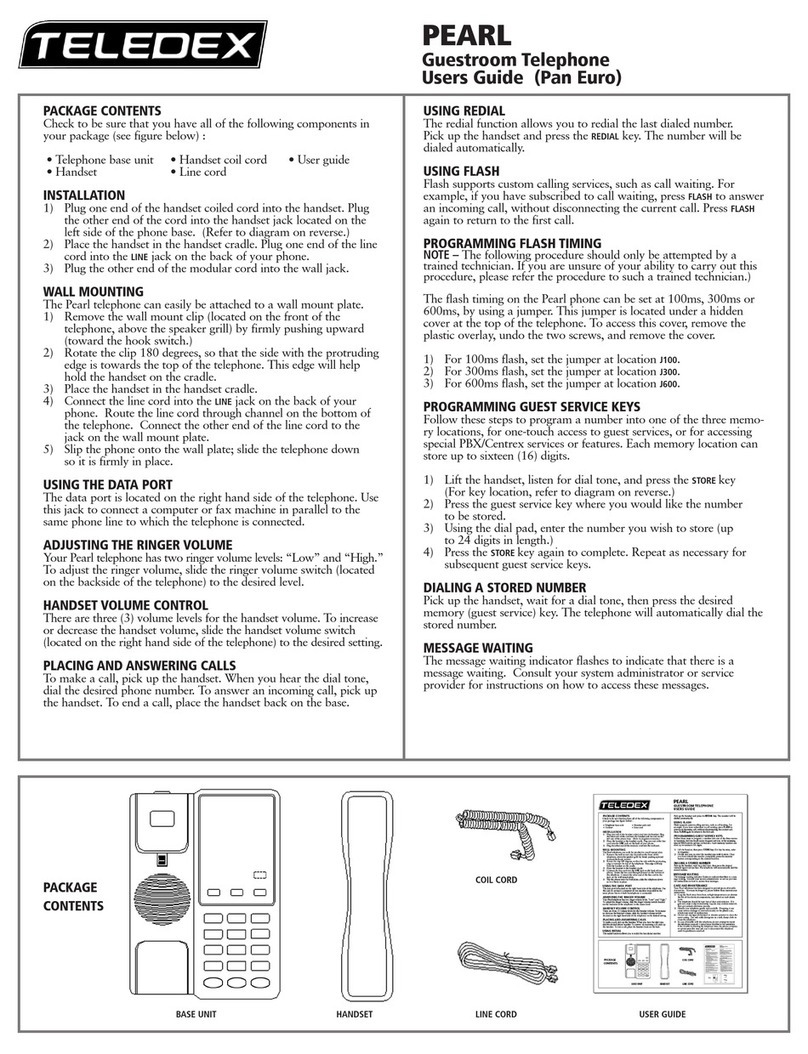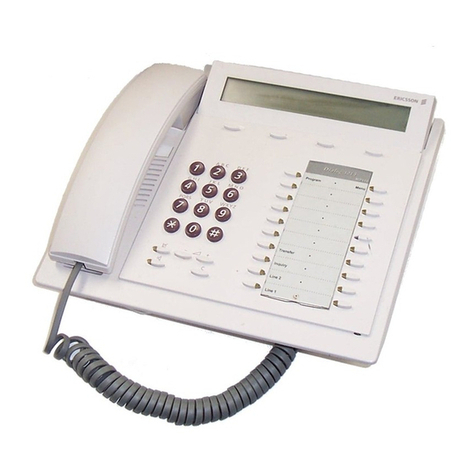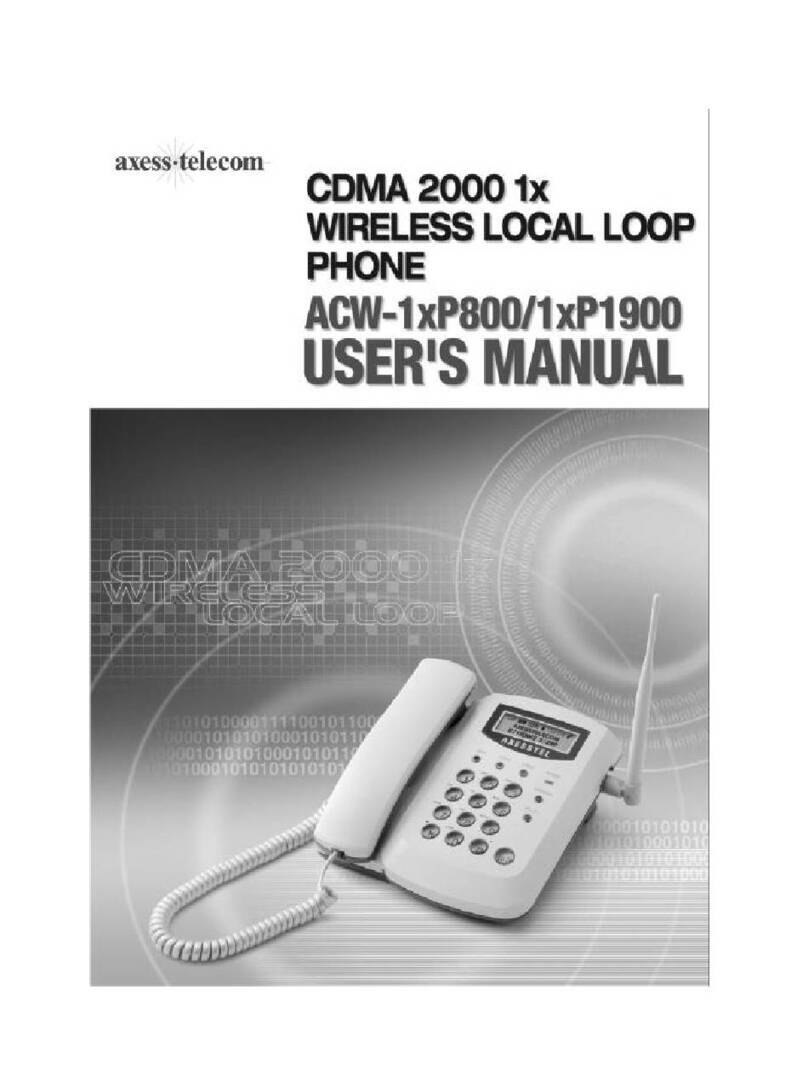
D.
2.1
Housing, Upper, 870Al U-(see Note 1)
Faceplate, Decorative, 870B1-(see Note 2),
2870B1-(see Note 2) or 870B2-(see Note .2),
2870B2-(see Note 2)
Cord, Mounting, D1OY-W (required when
adjunct dial connected to some MET sets and
some COM-KEY* key telephone systems)
Kit of Parts, D-180493 (Dial Tone Detector
and One-Touch Calling Switch)
Kit of Parts, D-180818 (Record Disable and
Dial Intermix) (see Note 3)
Note 1: Color suffix as follows: Black (-03),
Green (-51), White (-58), and Light Beige (-60).
Note 2: Color suffix as follows: Teak
Woodgrain (-108) or Walnut Woodgrain (-109).
$B2-type is the same as B1-type faceplate ex-
cept woodgrain runs in the opposite direction.
B2-type faceplates are compatible with MET
sets and COM KEY 416 key telephone system.q
Note 3: The D-180818 Kit of Parts can only
be used on dials equipped with an 870B or 2870B
Memory.
Operating Features
OOperating features (Fig. 1) are as follows.
●Dial.
●32-button array of low force, low travel
nonlocking memory buttons arranged in
three columns. Left and right columns have
eleven buttons, center column has ten but-
tons.
●LAST NUMBER DIALED button located in
lower right corner of memory array, when
momentarily depressed, automatically
redials the last number manually dialed from
the adjunct dial.
●RECORD button (nonlocking), when momen-
tarily depressed, lights the RECORD lamp
*Registered Trademark of American Telephone and Telegraph
Company.
●
●
1SS5, SECTION 501-164-201
and enables the memory circuits to store tele-
phone numbers.
RECORD OFF button (nonlocking), when
momentarily depressed extinguishes the
RECORD lamp, indicating that the dialer is
switched out of the record mode.
WAIT button (nonlocking), when momentar-
ily depressed during recording operation,
enters acode into memory to initiate ahalt
in the automatic dialing sequence [used
where access digit(s) required].
3. INSTALLATION
STANDARD INSTALLATION
3.01
Warning: Do not plug in either battery
or power unit until all connections and
modifications are completed. Take ex-
treme care not to damage the exposed
components, circuit, etc. when the set is
opened.
Connect the adjunct dial to the telephone set
using the D10U~87 or D1OY-5Omounting cord.
Refer to Fig. 6and 7for basic interface connections
and to Tables Dthrough Gfor specific connections.
3.02 The dials are shipped from the factory with
the battery disconnected. After all wiring
changes and modifications have been completed, con-
nect the battery by tilting the adjunct dial up and
inserting the battery plug into the mating jack.
Note: Write date of battery installation on
label provided.
Danger 1: For safety, securely attach
retaining clamp, if used, to ac outlet using
outlet cover screw BEFORE attempting
to install 995B14 power unit. The POwer
unit and any other cord plugged into the
ac outlet should always be unplugged
completely from the outlet BEFORE at-
tempting attach or remove the retaining
clamp. This will prevent the possibility yof
aloosened retainer clamp or metallic
outlet cover making contact with the ac
prongs of the power unit when partially
withdrawn from outlet. Do not use re-
taining clamp on outlets where the cover
Page 5

